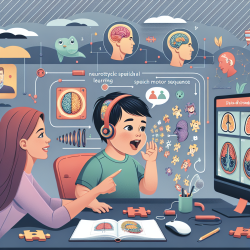The landscape of education is evolving, and with it, the need for inclusive and supportive environments for all students, including transgender and gender-diverse youth. The research article "Supporting Transgender Inclusion and Gender Diversity in Schools: A Critical Policy Analysis" by Kenan Omercajic and Wayne Martino offers critical insights into the implementation of trans-affirmative policies in Ontario's school systems. As educators and practitioners, understanding and applying these insights can significantly improve the support provided to transgender and gender-diverse students.
Key Insights from the Research
The study underscores the importance of moving beyond mere accommodation to fostering a culture of gender justice and democratization. Here are some pivotal points:
- Policy as Discourse: The way policies are framed and interpreted can significantly impact their effectiveness. The research highlights the necessity of understanding policy as a discourse that shapes and limits possibilities for action.
- Trans-Informed Frameworks: Utilizing trans-informed theoretical frameworks helps in addressing the broader systemic issues related to gender diversity. This includes recognizing the erasure and invisibility of trans lives and advocating for a shift from individual rights to systemic change.
- Curriculum Integration: The inclusion of trans-positive content in the curriculum is crucial. This involves not just adding trans-inclusive books to libraries but integrating gender diversity into everyday teaching practices.
- Professional Development: Ongoing training for educators is essential. This includes sensitivity training and professional development that equips teachers to handle gender diversity effectively.
Practical Steps for Educators
To create a more inclusive and supportive environment for transgender and gender-diverse students, educators can implement the following strategies:
- Review and Revise Policies: Ensure that school policies explicitly support transgender and gender-diverse students. This includes addressing issues like pronoun usage, bathroom access, and privacy.
- Inclusive Curriculum: Incorporate trans-positive and gender-diverse content into the curriculum. This helps normalize gender diversity and provides students with diverse role models.
- Professional Development: Participate in and advocate for professional development opportunities that focus on gender diversity and inclusion.
- Create Safe Spaces: Establish safe and supportive spaces for transgender and gender-diverse students. This can include support groups, counseling services, and inclusive extracurricular activities.
- Engage with Students and Families: Work closely with transgender and gender-diverse students and their families to understand their needs and provide appropriate support.
Encouraging Further Research
While the study provides valuable insights, it also highlights the need for ongoing research and policy development. Educators are encouraged to engage with current research and contribute to the growing body of knowledge on transgender inclusion and gender diversity in schools.For a deeper understanding and to explore the original research paper, please follow this link:
Supporting Transgender Inclusion and Gender Diversity in Schools: A Critical Policy Analysis.










